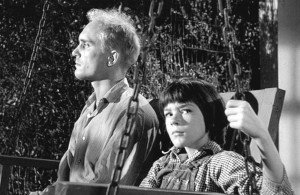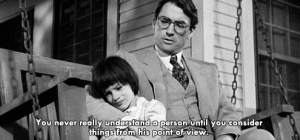by Sofia Sanchez Salcedo
Most of us were made to read “To Kill a Mockingbird,” by Harper Lee, sometime in our scholastic career. What most people remember from it is Scout’s shenanigans and her generally unladylike adventures, as well as some prominent anti-segregation rhetoric.
In Lee’s second book, “Go Set a Watchman,” Scout is once more in the forefront of the story, once again acting as both a narrator and the voice of revisionist history’s conscience.
The problem with the book
The book itself has been controversial before it was ever published because Lee, in her 90’s, had vowed never to publish a book after “To Kill a Mockingbird,” a promise she has kept since 1960. Fame found her even as she sought to hide from it, so she moved to New York and kept a low profile.
Last year, the publishing house HarperCollins got the dubious privilege to finally print the story. Lee had always been protected by her attorney sister; however, with Alice’s passing, the arguably senile Harper was said to get a new representative, who magically found a draft of “Go Set a Watchmen” as Lee turned 100. Even though Lee had gone her entire career since “Mockingbird” saying she would never publish another story again, she somehow okay-ed “Watchman.”

Nov. 5, 2007 – Washington, District of Columbia, U.S. – President Bush honors recipients of the Presidential Medal of Freedom, the highest civil award of the U.S.Government. Pulitzer Prize winning Author Harper Lee who wrote To Kill A Mockingbird was one of those chosen to receive the award. Source: Christy Bowe/Globe Photos/ZUMAPRESS.com
Possible literary theft or straight up origin falsehood conspiracies aside, the book was disappointing at best, and heartbreaking at worse.
The hero turns antihero
Atticus Finch, the skin-color- blind lawyer from Maycomb County, Ala., and father to both Scout and Jem in “Mockingbird” fell roughly from that pedestal many who read it in the 21st century had propped him on. Because the book was written to reflect the early 1930’s, where the “separate but equal” doctrine was very much a theme in the story. The hero of this theme was Atticus, and no elementary school teacher would allow you to disagree.
In “Watchman,” set in the 1960’s, Scout returns from the hip, post-racial, and generally superior New York City to the stereotypically backward Maycomb County. In the second book, Lee takes her much loved and almost perfect father figure, and makes him nothing more than a white supremacist. Oh yeah, spoilers, by the way. It’s okay if this just spoiled the book for you, since it was going to punch you right in the childhood when you read it anyway.
Scout prances around her former home and points out all of the now glaring racist and obviously wrong things in the county. Not to mention that she is maybe the only one in the town that is somehow able to cross ethnic lines without being cast off, even though the town is supposed to basically be KKK, USA.
Why this was unnecessary
While most of us living in 2015 (sorry, Trump), don’t think that people’s skin color has anything to do with their worth, this was obviously not the case not even a generation ago. With all of the racial tensions in places like Ferguson and Baltimore, racism is still something that America hasn’t fully outgrown, even after Plessy v. Ferguson was struck down with Brown v. Board of Education in 1954.
 Reading this book felt like a never ending movie trailer before the main show. It just went on forever, with Scout looking at this and thinking about that, while the world apparently had stood still in the early 1930’s in Ala. It’s hard to believe that an author who had beautiful allegories and well-crafted verse before suddenly writes a book where Reconstruction never happened, and that is okay with everybody but the Negroes. Oh, that too, she throws the much controversial “N word” around like a frat boy singing along with “Roll Call,” by Lil Jon in his car.
Reading this book felt like a never ending movie trailer before the main show. It just went on forever, with Scout looking at this and thinking about that, while the world apparently had stood still in the early 1930’s in Ala. It’s hard to believe that an author who had beautiful allegories and well-crafted verse before suddenly writes a book where Reconstruction never happened, and that is okay with everybody but the Negroes. Oh, that too, she throws the much controversial “N word” around like a frat boy singing along with “Roll Call,” by Lil Jon in his car.
Read the book, if you must, but don’t expect a literary masterpiece like “Mockingbird,” or even a conclusion to the story.






Leave a Reply